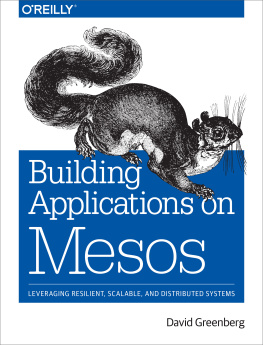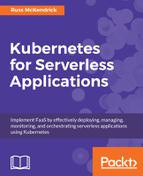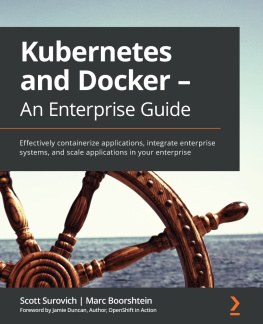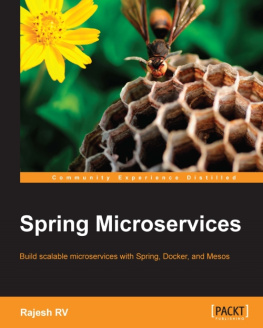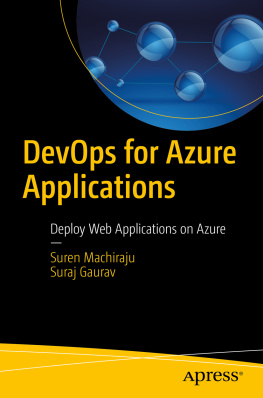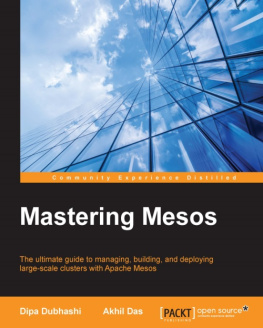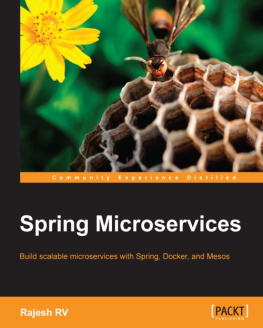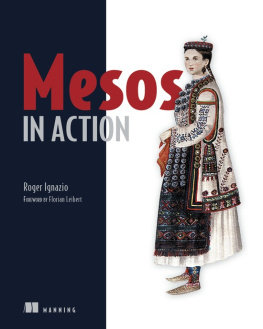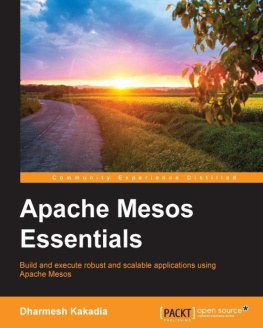David Greenberg - Building Applications on Mesos
Here you can read online David Greenberg - Building Applications on Mesos full text of the book (entire story) in english for free. Download pdf and epub, get meaning, cover and reviews about this ebook. year: 2016, publisher: OReilly Media, genre: Computer. Description of the work, (preface) as well as reviews are available. Best literature library LitArk.com created for fans of good reading and offers a wide selection of genres:
Romance novel
Science fiction
Adventure
Detective
Science
History
Home and family
Prose
Art
Politics
Computer
Non-fiction
Religion
Business
Children
Humor
Choose a favorite category and find really read worthwhile books. Enjoy immersion in the world of imagination, feel the emotions of the characters or learn something new for yourself, make an fascinating discovery.
- Book:Building Applications on Mesos
- Author:
- Publisher:OReilly Media
- Genre:
- Year:2016
- Rating:3 / 5
- Favourites:Add to favourites
- Your mark:
Building Applications on Mesos: summary, description and annotation
We offer to read an annotation, description, summary or preface (depends on what the author of the book "Building Applications on Mesos" wrote himself). If you haven't found the necessary information about the book — write in the comments, we will try to find it.
How can Apache Mesos make a difference in your organization? With this practical guide, youll learn how this cluster manager directs your datacenters resources, and provides real time APIs for interacting with (and developing for) the entire cluster. Youll learn how to use Mesos as a deployment system, like Ansible or Chef, and as an execution platform for building and hosting higher-level applications, like Hadoop.
Author David Greenberg shows you how Mesos manages your entire datacenter as a single logical entity, eliminating the need to assign fixed sets of machines to applications. Youll quickly discover why Mesos is the ultimate DevOps tool.
- Understand Mesos architecture, and learn how it manages CPU, memory, and other resources across a cluster
- Build an application on top of Mesos with Marathon, a platform for hosting services on Mesos
- Create new, production-ready frameworks for Mesos
- Write a custom executor to provide richer interaction between the Mesos scheduler and workers
- Dive into advanced topics, including the reconciliation process, Docker integration, dynamic reservations, and persistent volumes
- Learn about todays Mesos initiatives that will likely become tomorrows features
David Greenberg: author's other books
Who wrote Building Applications on Mesos? Find out the surname, the name of the author of the book and a list of all author's works by series.

